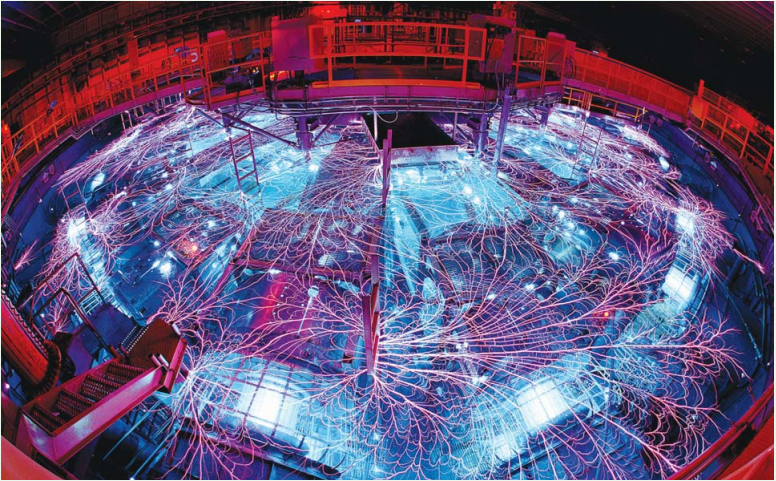
On Nov. 18, Sandia’s Z machine performed an experiment to enhance scientific understanding of the properties of plutonium. The test, a success, was the first plutonium experiment at Z in four years. Keith Matzen, director of Sandia’s pulsed power program (1600), says, “Understanding the detailed response of these materials at high pressure is important for ensuring the safety, reliability, and effectiveness of the nuclear stockpile. I am very proud of the
Z team.” The experiment is a continuation of stockpile stewardship studies performed at Sandia prior to the major refurbishment of the Z machine to increase its output of electrical energy. The improved output makes Z more valuable for weapons science studies and more effective in the worldwide effort to harness nuclear fusion for peacetime purposes. Materials for the just-completed experiment were provided by Los Alamos National Laboratory.

Cook, seen here at a recent Sandia visit, emphasizes the importance of the Z machine tests to NNSA’s stockpile stewardship
mission. Earlier in his career, Cook headed up Sandia’s pulsed
power program for several years. (Photo by Randy Montoya)
“The successful Z machine experiment demonstrates our commitment to ensuring that NNSA has the infrastructure, facilities, and highly trained scientists and engineers required to maintain a smaller stockpile without nuclear testing,” says Don Cook, NNSA deputy administrator for Defense Pro[1]grams. “We congratulate the Sandia-led team for a job well done.” Chris Deeney, assistant deputy administrator for Stockpile Stewardship, says, “Stockpile stewardship brings together the laboratories, local high-tech industry, and the NNSA to safely develop measurements that complement our work in the subcritical experiments at Nevada.” Cook and Deeney, in years past held research and administrative positions at Sandia’s Z machine and well understand the accelerator’s capabilities. The Z machine is Earth’s most powerful and efficient laboratory radiation source. It can fire 200 “shots” a year, using electrical currents up to 26 mil[1]lion amperes to produce peak X-ray power of 350 terawatts and an X-ray energy of 2.7 megajoules. The Z machine is part of Sandia’s pulsed power program, which concentrates electrical energy and turns it into short pulses of enormous electrical power. The magnetic pressure associated with the flow of these very large currents is used to generate either X-ray pulses or pressure waves in materials. Because Z creates radiation conditions on a small scale similar to those caused by the detonation of nuclear weapons, pulsed power from its earliest days has been used to study weapons effects and nuclear fusion. More recently, Z’s pressure waves, which exceed pressures at the center of the earth, have been used to study the dynamic properties of nuclear weapon materials.